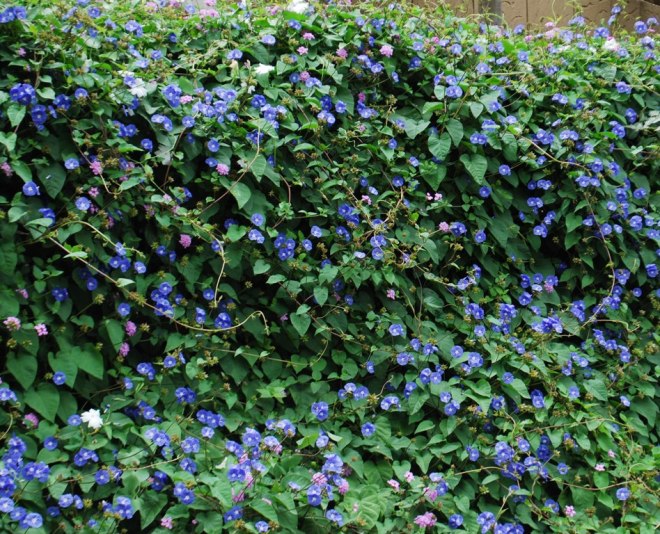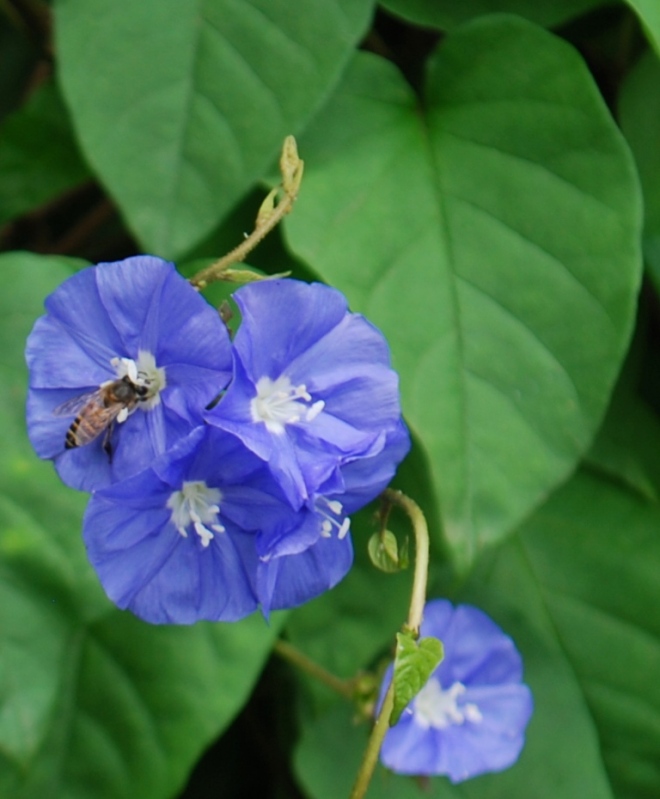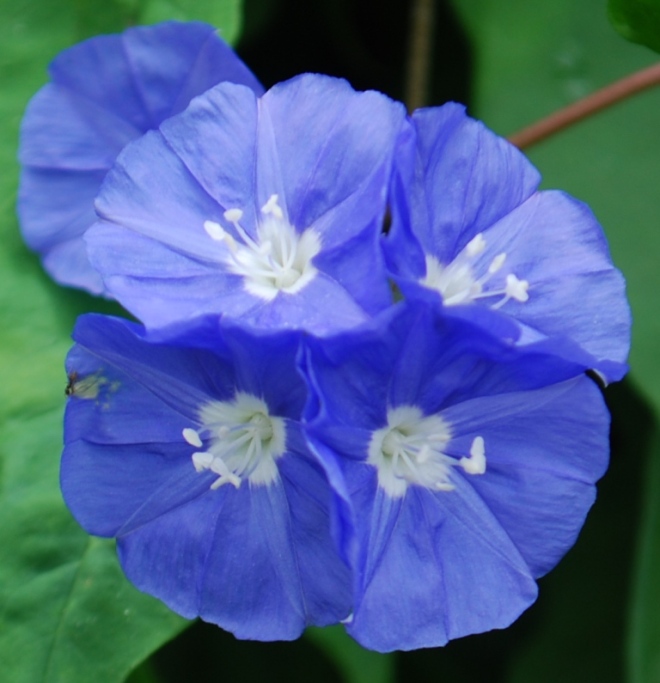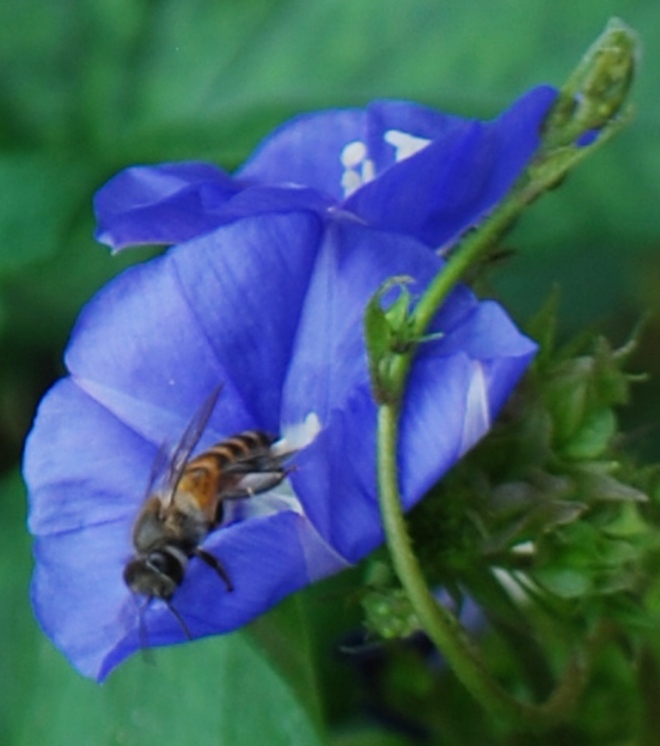This Glorious Wall dotted with Blue Flowers in the picture below is created primarily by The Blue Cluster Vine.

If you observe the picture above you will see Flowers in Three Colours, yet , and this is amazing, the Indian Honey Bees ( Scientific name Apis cerana indica ) were attracted only to the Ultramarine Blooms.
The vines bearing clusters of Attractive Blooms is named Jacquemontia pentanthos by Botanists and belongs to the Morning Glory family Convolvulaceae.( if you check out earlier blogs you will see many a flower that belong to this glorious family)

Appropriately named Blue Cluster Vine due to the Brilliantly Blue coloured, small penny sized flowers, with white centers which are borne in groups or clusters.
The tendrils bearing Heart Shaped leaves is a distinctive feature of these Imports from the Americas.

The Ultramarine Blooms drive the Honey Bees crazy and you can see a Bee ,in the picture below .practicing the Japanese art of folding, Origami on the petals of these Gorgeous five petaled Blue Flowers.
The Striking Sky Blue colour of the dainty Flowers has me and the Bees totally Enchanted. I hope you will follow suit as well.

The featured Image shows the deadly weapons or Stings these Bees are armed with, warning me to take pictures from a distance and not cross the Red ( or is it yellow) Line.

enchanted indeed! my favourite shade of blue
LikeLiked by 2 people
mesmerizing Blue, indeed. Thank you Tony.
LikeLiked by 1 person
Wow this is amazing… Keep up ❤️️ http://www.misskymmiee.com
LikeLike
thank you.
LikeLike
Beautiful photos
LikeLiked by 1 person
thank you.
LikeLike
Just beautiful
LikeLiked by 1 person
thank you
LikeLiked by 1 person
The bees appear to be different from the Italian Bees common to beekeepers in the US. They look like they have longer bodies. Are they calm? Are they productive for those tending them– or are they wild?
LikeLiked by 1 person
The scientific name is Apis cerana indica. Indian honeybee.I never got a bite, they are usually busy collecting honey and keep moving from flower to flower.
LikeLike
Your blog gives me hope. (I LOVED India, btw. I will return.)
LikeLiked by 1 person
All the best, hope you will see the details on your future trips. Thank you.
LikeLike
Truly beautiful – stunning images
LikeLiked by 1 person
thank you
LikeLike
Great work! Followed! Feel free to follow us back if you enjoyed our work! Cheers
LikeLiked by 1 person
thank you. hope you read the post as well??
LikeLike
Indeed! I liked the aspect of the bee in the picture, it really makes you think about how such small creatures are so important to the beauty of this world. Follow our blog as well if you want, it would greatly help us out! Have a good week and we are looking forward to your future work.
LikeLiked by 1 person
thank you, glad you had a glimpse of nature
LikeLike
it’s hard to pose a bee 🙂
LikeLike
ha ha indedd it is . they are always busy
LikeLike
I love blue… so beautiful Thank you dear Mukul, have a nice day, Love, nia
LikeLiked by 1 person
am always delighted to read your views and comments on my blogs. Thank you, have a great day as well.Do send across some rain, it is hot and dry in New Delhi.
LikeLiked by 1 person
I try to send them 🙂 Have a nice rainy days! You are welcome dear Mukul, Love, nia
LikeLiked by 1 person
ha ha, thank you
LikeLiked by 1 person
Oh wow, that colour is amazing!
LikeLiked by 1 person
Glad to receive your positive comments.Thank you.
LikeLiked by 1 person
Great post
LikeLiked by 1 person
tks
LikeLike
Very nice mukul !
LikeLiked by 1 person
thank you
LikeLike
Beautiful photos!
LikeLiked by 1 person
thank you
LikeLike